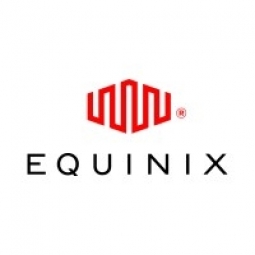技术
- 基础设施即服务 (IaaS) - 混合云
- 基础设施即服务 (IaaS) - 公共云
适用行业
- 水泥
- 建筑与基础设施
适用功能
- 物流运输
- 维护
用例
- 施工管理
- 基础设施检查
服务
- 云规划/设计/实施服务
- 系统集成
客户
塞莱罗
关于客户
Celero作为加拿大最大的信用合作社服务提供商,Celero 的使命是拉近信用合作社与其服务的成员之间的距离——使用集成的金融技术解决方案作为建立联系、提供便利和灌输信任的桥梁。
挑战
Celero 希望对其 IT 基础设施进行现代化改造,以帮助各种规模的信用合作社满足其成员的需求,并在瞬息万变的行业中保持领先地位。该公司希望快速启动其数字化转型计划,而不是花费数年时间来构建概念验证。
它还需要平衡短期目标(将新的云优化功能集成到现有 IT 基础设施中而不破坏旧系统)与长期目标,即为微服务和云原生解决方案定义的未来行业格局做准备。
解决方案
在考虑了需要连接的关键云提供商和合作伙伴(包括 Microsoft Azure)之后,该公司开始与 Equinix 及其金融服务专家和全球解决方案架构师合作。所有这些合作伙伴和云提供商不仅已经成为 Platform Equinix® 生态系统的一部分,而且可以通过使用 Equinix Fabric™ 的低延迟软件定义互连来访问它们。
解决方案组件:
- Equinix 织物™。通过将遗留系统快速连接到云来简化向混合云的迁移,并简化与业务合作伙伴的互连。
- 网络边缘。允许在需要的时间和地点即时部署新的虚拟网络服务,无需额外的硬件要求。
- Equinix 智能手®。员工无需亲自访问数据中心来执行系统管理和故障排除。
- 全球解决方案架构师和行业专家。 Equinix 团队的专业知识帮助 Celero 充分利用全球金融服务生态系统。
运营影响
数量效益

Case Study missing?
Start adding your own!
Register with your work email and create a new case study profile for your business.
相关案例.

Case Study
System 800xA at Indian Cement Plants
Chettinad Cement recognized that further efficiencies could be achieved in its cement manufacturing process. It looked to investing in comprehensive operational and control technologies to manage and derive productivity and energy efficiency gains from the assets on Line 2, their second plant in India.

Case Study
IoT System for Tunnel Construction
The Zenitaka Corporation ('Zenitaka') has two major business areas: its architectural business focuses on structures such as government buildings, office buildings, and commercial facilities, while its civil engineering business is targeted at structures such as tunnels, bridges and dams. Within these areas, there presented two issues that have always persisted in regard to the construction of mountain tunnels. These issues are 'improving safety" and "reducing energy consumption". Mountain tunnels construction requires a massive amount of electricity. This is because there are many kinds of electrical equipment being used day and night, including construction machinery, construction lighting, and ventilating fan. Despite this, the amount of power consumption is generally not tightly managed. In many cases, the exact amount of power consumption is only ascertained when the bill from the power company becomes available. Sometimes, corporations install demand-monitoring equipment to help curb the maximum power demanded. However, even in these cases, the devices only allow the total volume of power consumption to be ascertained, or they may issue warnings to prevent the contracted volume of power from being exceeded. In order to tackle the issue of reducing power consumption, it was first necessary to obtain an accurate breakdown of how much power was being used in each particular area. In other words, we needed to be able to visualize the amount of power being consumed. Safety, was also not being managed very rigorously. Even now, tunnel construction sites often use a 'name label' system for managing entry into the work site. Specifically, red labels with white reverse sides that bear the workers' names on both sides are displayed at the tunnel work site entrance. The workers themselves then flip the name label to the appropriate side when entering or exiting from the work site to indicate whether or not they are working inside the tunnel at any given time. If a worker forgets to flip his or her name label when entering or exiting from the tunnel, management cannot be performed effectively. In order to tackle the challenges mentioned above, Zenitaka decided to build a system that could improve the safety of tunnel construction as well as reduce the amount of power consumed. In other words, this new system would facilitate a clear picture of which workers were working in each location at the mountain tunnel construction site, as well as which processes were being carried out at those respective locations at any given time. The system would maintain the safety of all workers while also carefully controlling the electrical equipment to reduce unnecessary power consumption. Having decided on the concept, our next concern was whether there existed any kind of robust hardware that would not break down at the construction work site, that could move freely in response to changes in the working environment, and that could accurately detect workers and vehicles using radio frequency identification (RFID). Given that this system would involve many components that were new to Zenitaka, we decided to enlist the cooperation of E.I.Sol Co., Ltd. ('E.I.Sol') as our joint development partner, as they had provided us with a highly practical proposal.

Case Study
Splunk Partnership Ties Together Big Data & IoT Services
Splunk was faced with the need to meet emerging customer demands for interfacing IoT projects to its suite of services. The company required an IoT partner that would be able to easily and quickly integrate with its Splunk Enterprise platform, rather than allocating development resources and time to building out an IoT interface and application platform.

Case Study
Bridge monitoring in Hamburg Port
Kattwyk Bridge is used for both rail and road transport, and it has played an important role in the Port of Hamburg since 1973. However, the increasing pressure from traffic requires a monitoring solution. The goal of the project is to assess in real-time the bridge's status and dynamic responses to traffic and lift processes.

Case Study
Bellas Landscaping
Leading landscaping firm serving central Illinois streamlines operations with Samsara’s real-time fleet tracking solution: • 30+ vehicle fleet includes International Terrastar dump trucks and flatbeds, medium- and light-duty pickups from Ford and Chevrolet. Winter fleet includes of snow plows and salters.








